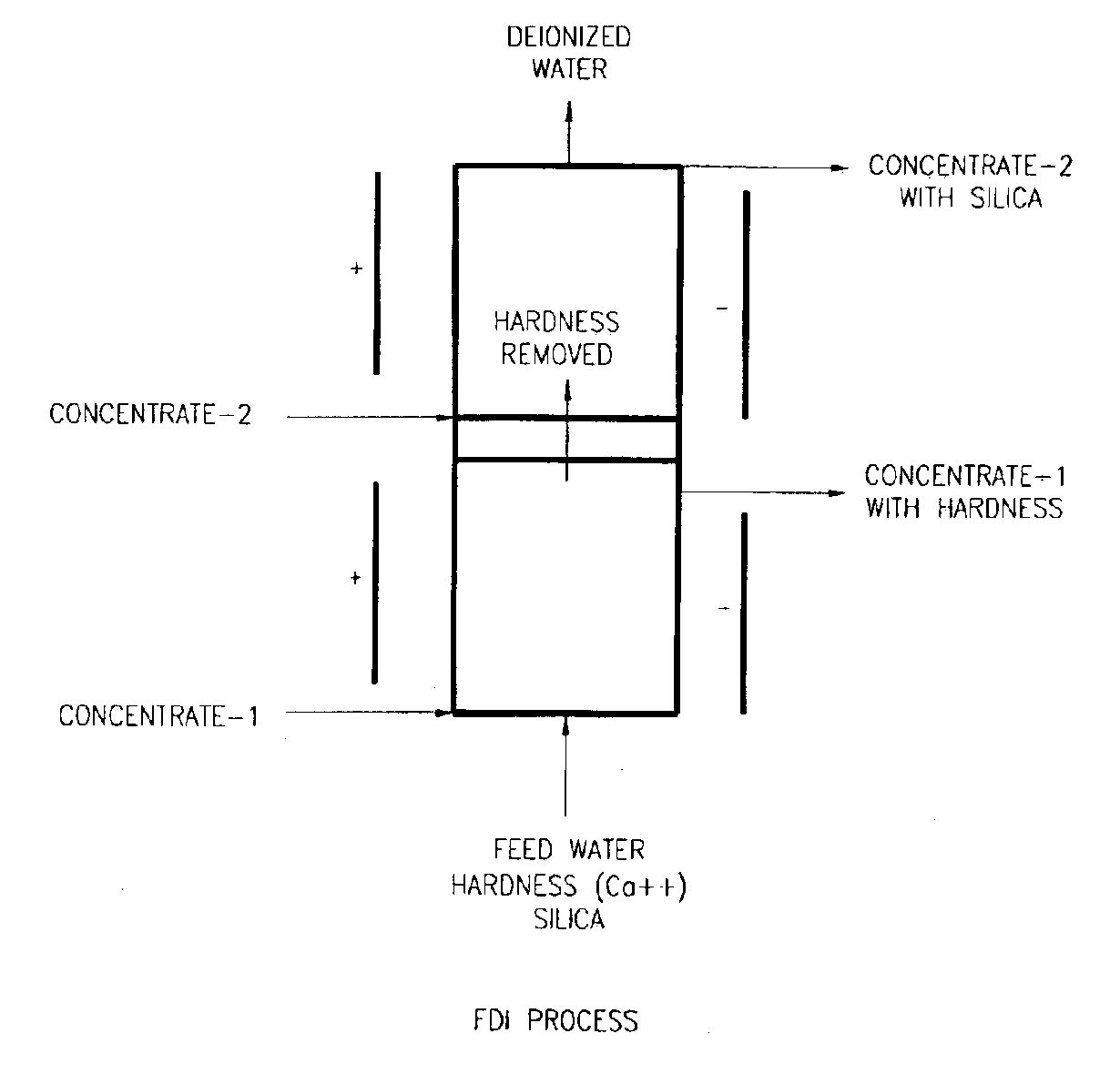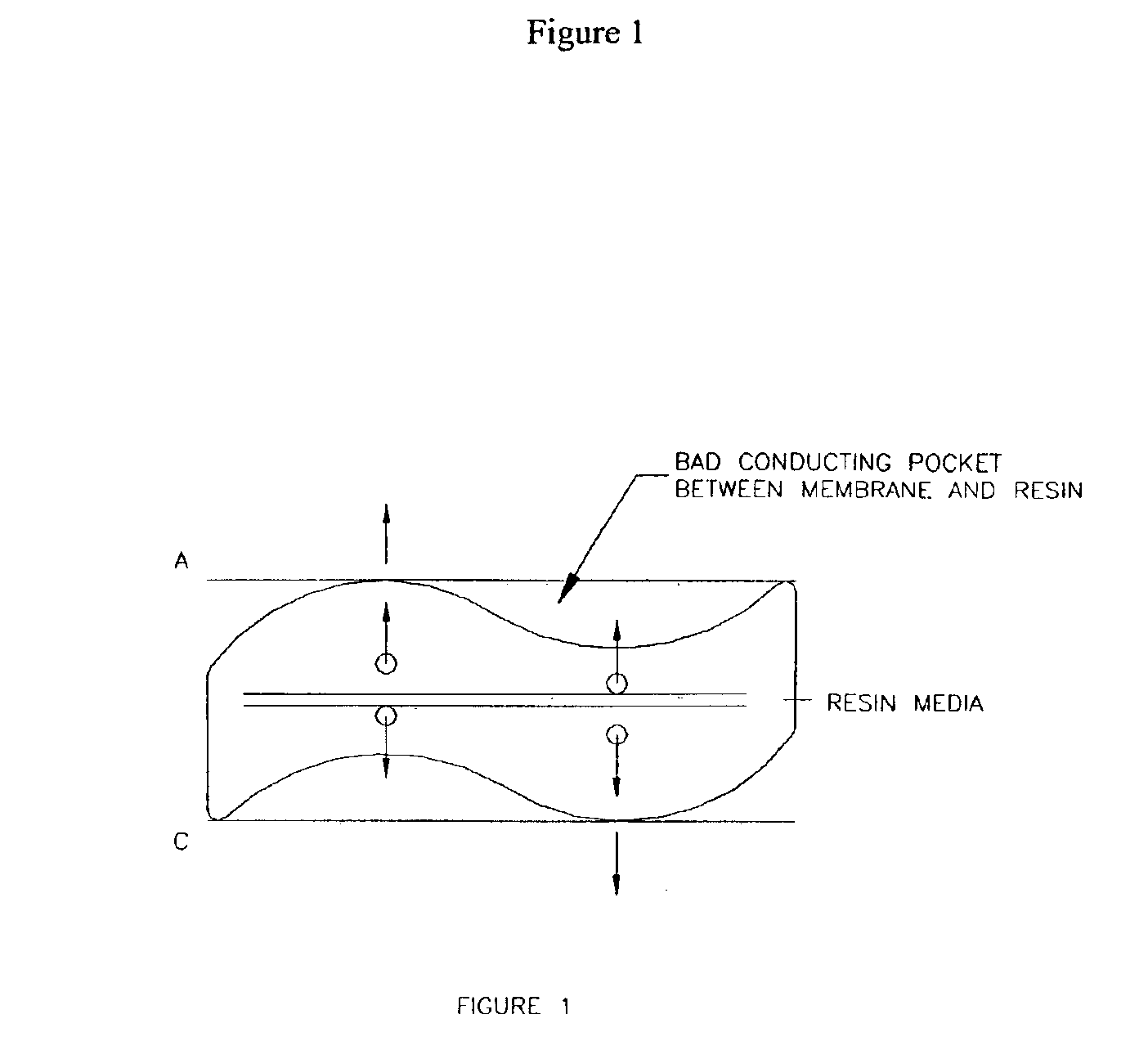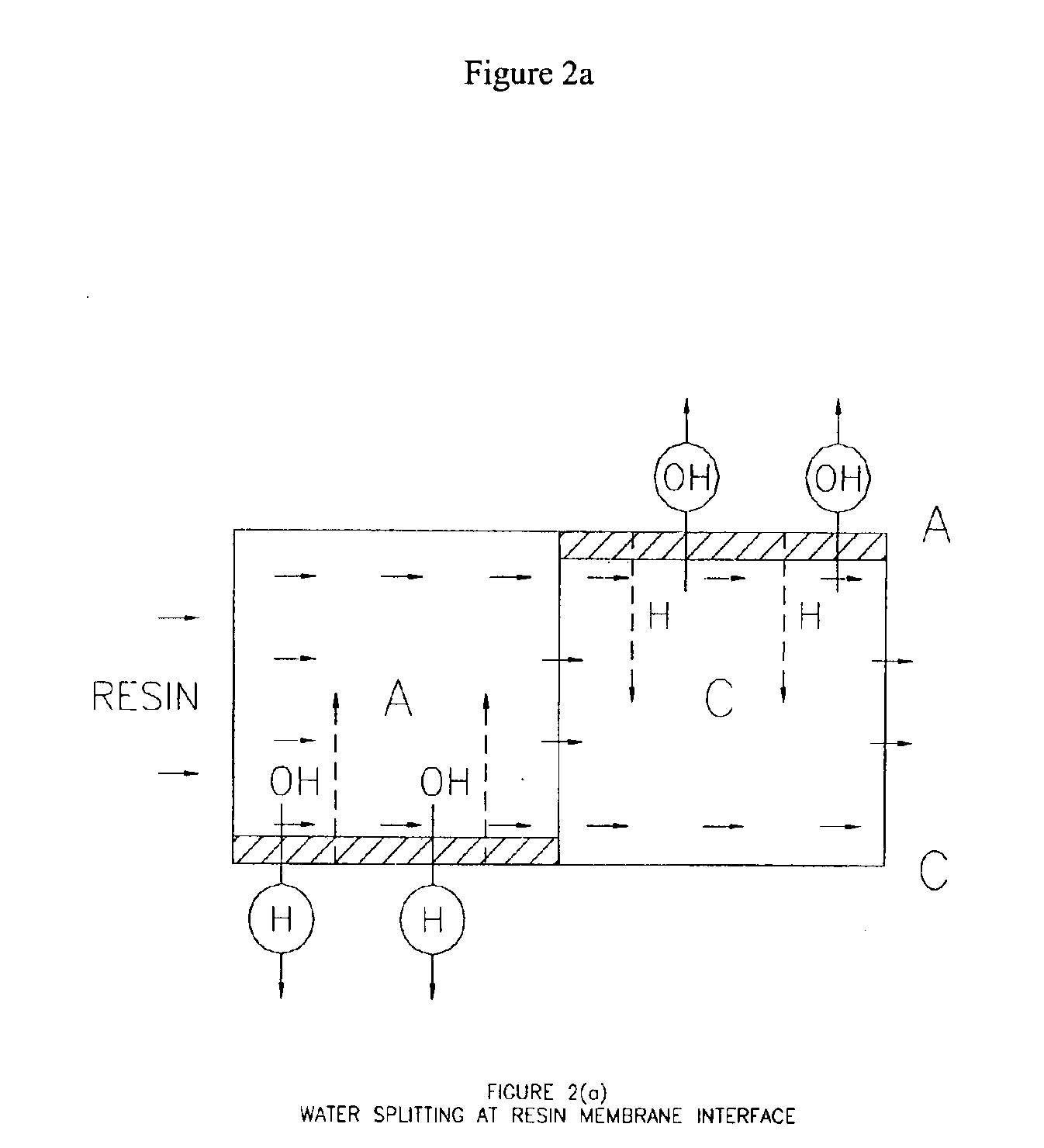Fractional deionization process
a deionization process and ionization technology, applied in the direction of ion exchange, liquid/fluent solid measurement, peptides, etc., can solve the problems of scaling of more strongly ionized species, and achieve the effects of facilitating the removal of more weakly ionized species, efficient removal, and energy saving
- Summary
- Abstract
- Description
- Claims
- Application Information
AI Technical Summary
Benefits of technology
Problems solved by technology
Method used
Image
Examples
case-1
[0069]The feed water has an impurity of calcium ions. The feed pH is between 6 and 6.5 with an occasional rise up to 7.5.
[0070]All the calcium ions are separated in the reject side such that the product received contains no calcium and the reject side is loaded with the calcium ions. There are fewer calcium ions in the feed side than in the reject side. Precipitation in the reject side should be avoided, and to achieve this condition, the reject side pH should be slightly acidic; more H+ ions should be transferred along with the cations. Maintaining pH below neutral would be enough to prevent calcium precipitation; any more would be a waste of energy.
[0071]On the other side, in the feed chamber, basicity needs to be avoided. If the pH of the product is neutral or near neutral, the process would run more smoothly. Because more H+ ions are used in the reject side, that many more OH− ions would find their way into the product after getting consumed, so if the product pH is not neutral,...
example 01
[0077]Two normal stacks, each of two cell pairs, made the initial dual voltage system with dilute chambers separately and connecting them in series such that feed and concentrate were fed in the first stack, and the product and the reject of first stack were the feed for the second stack.
[0078]The effective membrane characteristics in the stacks used for all the trial runs were:[0079]Dimensions: 190 mm wide and 350 mm long.[0080]Dilute chambers: two numbers in each stage.[0081]Operating membrane surface area 1330 cm2 in each stage.[0082]Total surface area 2660 cm2 in both the stages.[0083]Bed length 0.7 m per stage and 1.4 m in total.
[0084]Product flow rate achieved in this design was 0.56 to 0.71 cm3 per minute per cm2 of surface area. The results of this trial are set forth in Table 3.
[0085]
TABLE 3HardnessFeedFeedProductConcConc outCalcium as CaCO3PrFlowCondCondVoltsAmpsFlowCondFeedProductpsicc / minus / cmpHus / cmpHV / pairadccc / minus / cmpHppmppm36180022.36.54.68.564.750.197202803.963618...
case-2
[0087]The feed water has impurities of silica and carbonic acid. The feed pH is between 6 and 6.5.
[0088]All the anionic impurities are separated from the feed to give a product free of silica and carbonic acid, and the reject collects all the separated ions. For this to happen, enough OH− ions have to be produced in the feed chamber for the reaction to occur. High energy is also required so that the concentration is maintained at a high enough level on the membrane surface for easy transfer. This would allow more OH− ions to transfer across as well. As a result the pH of the reject side would be basic, while the product side would remain neutral.[0089]Reject: pH neutral→towards basic.[0090]Product: pH slightly acidic→towards neutral.
Stage-2 Effect
The feed in this stage contains as impurities primarily the weakly ionized species that were not eliminated in the first stage. As was previously explained, both silica and carbonic acid groups require OH− ions and high energy for ionizatio...
PUM
| Property | Measurement | Unit |
|---|---|---|
| Electrical resistance | aaaaa | aaaaa |
| Fraction | aaaaa | aaaaa |
| Fraction | aaaaa | aaaaa |
Abstract
Description
Claims
Application Information
 Login to View More
Login to View More - R&D
- Intellectual Property
- Life Sciences
- Materials
- Tech Scout
- Unparalleled Data Quality
- Higher Quality Content
- 60% Fewer Hallucinations
Browse by: Latest US Patents, China's latest patents, Technical Efficacy Thesaurus, Application Domain, Technology Topic, Popular Technical Reports.
© 2025 PatSnap. All rights reserved.Legal|Privacy policy|Modern Slavery Act Transparency Statement|Sitemap|About US| Contact US: help@patsnap.com



